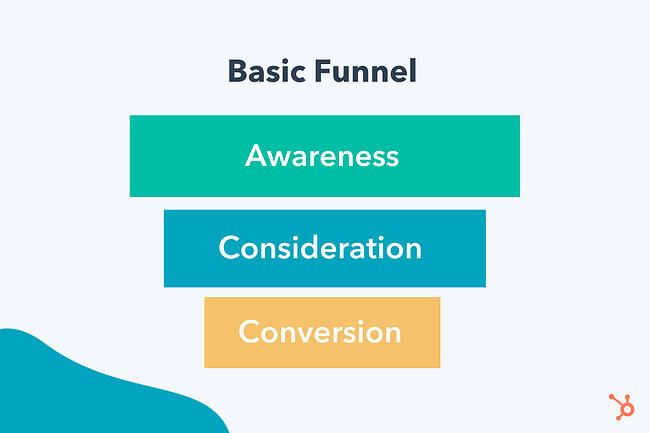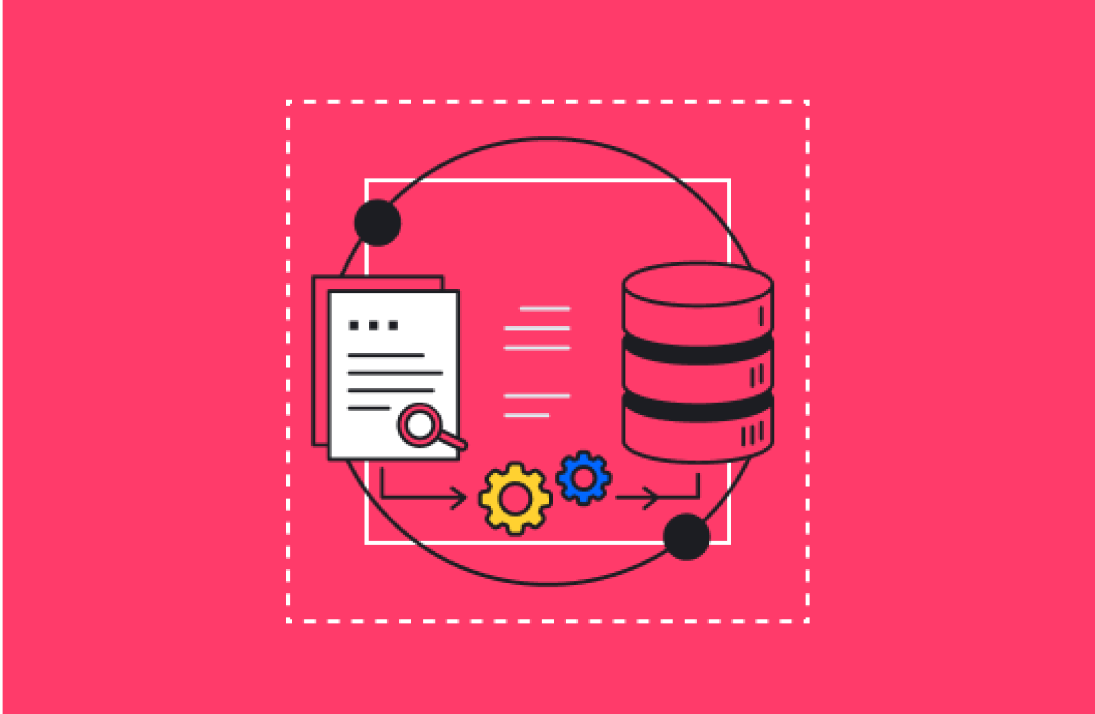One of the most significant challenges businesses face in their marketing strategies is the inability to coordinate marketing activities to reach desired goals. Sometimes, different marketing tactics are used in an ad hoc way without any real organization.
The company might publish blog posts, post to social media, and send out marketing emails, but each tactic isn’t mapped to a specific stage of the customer lifecycle. This is where full-funnel marketing comes in.
In this article, you’ll learn what a full-funnel marketing strategy looks like. You’ll also explore how to map the customer lifecycle through marketing funnel stages and learn what marketing tactics to use at each stage.
What is a Full-Funnel Marketing Strategy?
A full-funnel marketing strategy is an integrated approach to marketing that covers all stages of the customer journey. This marketing strategy seeks to engage customers with appropriate content and messaging at each stage of their journey to provide them with an optimal experience that leads to conversion and loyalty.
Full-funnel marketing uses a combination of tactics, such as social media, content marketing, email campaigns, personalization, and product recommendations. Working together, these tactics create an engaging experience for potential customers.

(Source: HubSpot)
A basic marketing funnel consists of three stages. At the top of the funnel is “Awareness,” followed by “Consideration,” and “Conversion.” For our purposes, these sections are “top-funnel,” “mid-funnel,” and “bottom-funnel.”
The key to a successful strategy is recognizing what customers need at each lifecycle stage and engaging in marketing activities and tactics that are appropriate to those needs. As such, each funnel stage requires separate marketing tactics.
Top-Funnel Marketing Tactics
Top-funnel marketing tactics focus on building awareness for your brand among people who may not have heard of it. These tactics are rarely sales oriented. Instead, they are focused on delivering valuable, useful information to an audience to establish your brand as credible and helpful.
Here are a few of the most common top-funnel marketing tactics.
Content Creation
Content comes in a variety of forms and can be used at each stage of the funnel. Top-funnel content is typically informative and helpful, not focused on a sales pitch.
Some of the most common types of content include blog posts, web pages, infographics, videos, checklists, case studies, testimonials, and even events and webinars.
SEO
Search engine optimization (SEO) is the practice of designing online content so that it is easily searchable and listable by the web crawlers sent out by search engines. Since Google has the search engine marketing more-or-less cornered, most SEO activities are focused on meeting Google’s standards for published content.
Google has established technical guidelines for site structure, languages, coding, and individual website pages. To avoid penalization from Google, you also need to include information like meta descriptions, image metadata, and details about your business online.
However, optimization moves beyond simply meeting these guidelines. The main objective of any SEO initiative is to get your online content listed at the top of search results for important search terms relating to your business.
To do this you must engage in the following:
- Keyword optimization—use of relevant search terms in the content.
- Link-building—embedding links in the content to internal pages and external authoritative websites.
- Mobile optimization—taking a mobile-first approach to site building to ensure your content is readable and easy to navigate on mobile devices.
- Content optimization—creating more useful and readable content than competitors.
Email Campaigns
Like content creation, you can use email campaigns to engage customers at each stage of the funnel. At the top of the funnel, email campaigns often take the form of newsletters and other types of informational content.
To send emails, you’ll first need to obtain contact information. You can do this by embedding forms on your website to encourage visitors to sign up for your messages. Remember, top-funnel content must always deliver something of value to potential customers in exchange for their contact information, with no strings attached.
Social Media
Engaging in top-funnel marketing on social media involves providing content that is targeted to the early stages of the customer journey. In B2C settings, this content often focuses on educating potential customers about your brand, product, or service. However, B2B businesses should focus also on providing top-funnel audiences with useful information.
Content can be delivered in various forms such as written posts, blogs (via links), videos, infographics, GIFs, or images. It is also important to optimize content for each platform and experiment with different types of content to see what resonates best with your audience.
You can also use social media ads to target specific audiences and draw more attention to your message.
Mid-Funnel Marketing Tactics
Once potential customers have been made aware of your product or service, mid-funnel tactics focus on nurturing those leads by providing educational content about solving their problems, as well as how your product and service can help.
At this point in the lifecycle, the audience has already identified a problem they have, and they are looking for a solution. Your goal should be to convince them that your products or services could be that solution.
Here are a few of the most prominent mid-funnel marketing tactics.
Webinars
Webinars provide an opportunity for brands to interact with potential customers in a meaningful way and are a powerful mid-funnel marketing strategy.
During the webinar, you can provide valuable information about solving common industry problems. Many companies choose to work with a panel of experts, so they can answer questions from attendees and provide additional insight into their challenges.
Your webinar should relate to a topic that is addressed by your product or service. For example, if you sell product management software, you could host a webinar about coordinating projects between remote teams.
After the webinar, don’t forget to follow up with participants to encourage further engagement and offer additional resources relevant to their interests.
eBooks and How-to Guides
eBooks and how-to guides are pieces of downloadable content that provide in-depth information about specific topics. They can be used as additional resources to help potential customers make informed decisions. Many companies place calls-to-action (CTAs) on blog posts and web pages to encourage visitors to download these assets.
If a visitor downloads an eBook from your website, they are demonstrating a heightened level of intent to engage with your business. That makes these assets great conversion opportunities.
Industry Research Reports
Finally, you can publish authoritative research to demonstrate your expertise on a given subject matter and provide useful information to your audiences. These reports are independently researched (usually through a survey you commissioned) and are typically brand-agnostic.
In other words, they provide useful industry data and are not advertisements for your brand.
Bottom-Funnel Marketing Tactics
Bottom-funnel marketing tactics are oriented toward converting prospects into customers and retaining existing customers by providing them with additional value. Here are some of the most common bottom-funnel marketing tactics.
Discounts and Special Offers
Customers (even B2B customers) appreciate deals and discounts, and they provide a great incentive to give your product or service a try for the first time.
Retargeting
Retargeting is an effective bottom-funnel marketing strategy that allows brands to reach customers who have already shown an interest in their product or service. Retargeting ads can be used to remind potential customers of the product and encourages them to take the next steps such as making a purchase.
Personalized Outreach
B2B conversions often rely on a personal touch.
By personalizing the messages you send to sales-qualified leads, you can create a more tailored experience for potential customers, which can help increase sales and conversions. Your potential customers will appreciate being spoken to by an actual human, especially if they are considering a sizable purchase from your brand.
Loyalty Programs
Loyalty programs are post-purchase strategies that reward customers for continuing to do business with your brand. These programs can take a variety of forms. Many companies provide loyal customers with discounts, but you can also offer them complementary products and services or even free swag.
Start Leveraging Funnel Marketing
Funnel marketing is an essential part of any successful marketing strategy because it allows marketers to create tailored campaigns that appeal to prospective customers at each lifecycle stage. By understanding which tactics work best at each stage—top-, mid-, and bottom—marketers can maximize their efforts across all channels for maximum ROI.
Contact us at Aptitude 8 to learn more about how to map lifecycle stages and plan marketing activities accordingly.





